Medal of Honor Pacific Assault Designer Diary #1
Executive Producer Rick Giolito discusses how Medal of Honor Pacific Assault will be a whole new experience for fans of this popular series.
World War II first-person shooters that allow you to relive the intense combat of the war are incredibly popular, to say the least. That's in no small part due to Electronic Arts' superb Medal of Honor games that have appeared on both the consoles and the PC. However, most World War II shooters are set in the European theater of the conflict, where most of the major land battles took place. The war in the Pacific, on the other hand, was primarily a naval war, though one punctuated by brutal infantry combat for various strategically vital islands. Those battles are going to be the focus of Medal of Honor Pacific Assault, EA's upcoming first-person shooter for the PC. In the kick off to our newest series of designer diaries, Rick Giolito, executive producer for Medal of Honor, tells us how they're using the new setting to also introduce a whole range of new technologies and gameplay features to elevate the action, and the immersion, to a whole new level.
Medal of Honor Goes to the Pacific
By Rick GiolitoExecutive Producer, Electronic Arts
Electronic Arts' Medal of Honor franchise was borne out of conversations in 1997 between Steven Spielberg and the staff of Dreamworks Interactive. The original Medal of Honor was developed for the PlayStation and published by EA in 1999. It was the first first-person shooter on the PlayStation platform and was met with excellent reviews and fine sales. I joined the team after the original product and have executive-produced all of the Medal of Honor products since that time.
Mr. Spielberg, along with his trusted military consultant, Captain Dale Dye, have served as our inspiration and guiding lights since the beginning. Dale not only reviews all of our work and guides the design of the missions, but he also accompanies the staff on all of our research trips. Last year, Dale took the design, production, art, and sound team members on a pan-Pacific adventure, visiting all of the sites that are depicted in Medal of Honor Rising Sun as well as Medal of Honor Pacific Assault. Dale has the ability to get us into places even the State Department honchos would have trouble with. You'll hear more about our research trips later.
Following the release of Medal of Honor Underground for the PlayStation, I was encouraged to expand the franchise, and with this, Medal of Honor Allied Assault was borne. The centerpiece for the product would be the Allied assault on the beaches of Normandy, more commonly known as D-Day. The vision for the product was cemented in the acronym D.I.C.E (Deep Interactive Cinematic Experience). Copious use of scripted events and moment-by-moment storytelling took the first-person shooter genre to a new level. Allied Assault went on to become one of the best-selling PC products in history. It even outsold Half-Life--something deemed impossible at the time.
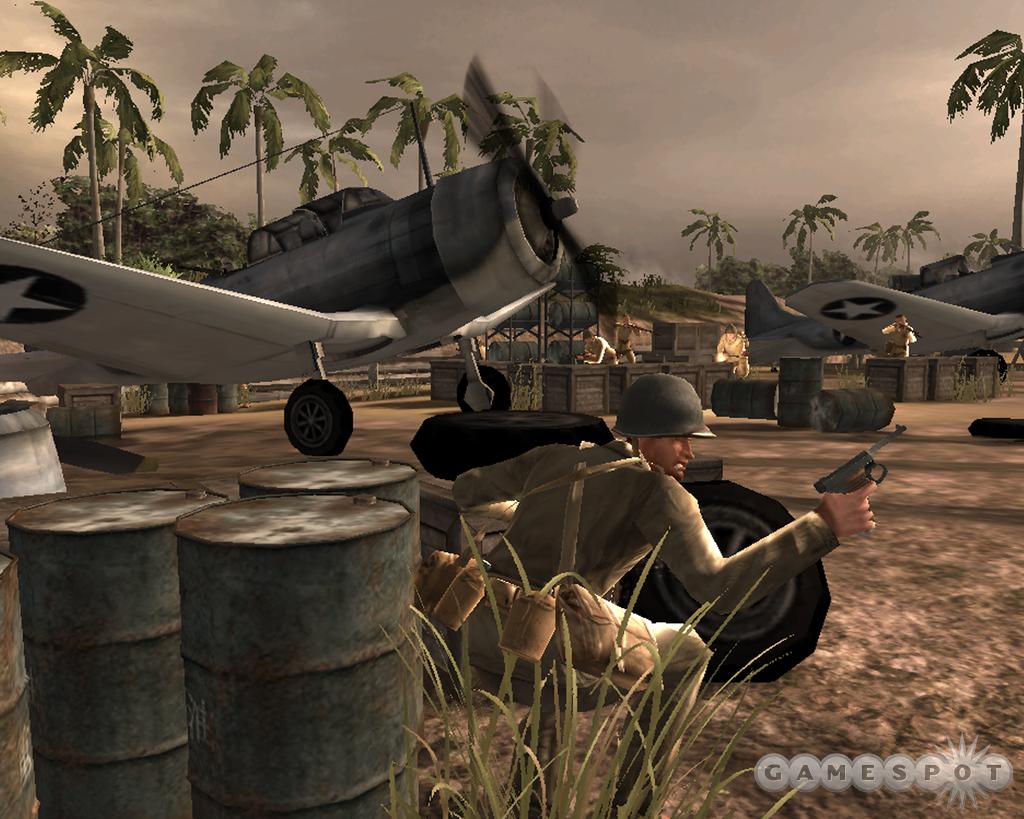
At about the same time, we embarked on the next line in the console series and our first on PlayStation 2, Medal of Honor Frontline. The same vision held for this product as well: Deep storylines and heavy scripting coupled with intense first-person shooter gameplay and sound! I often say that Medal of Honor is 49-percent story and gameplay and 51-percent sound and music. Our sound crew, headed by Erik Kraber, is the best in the world, and without them Medal of Honor would not be the franchise it is today. You'll definitely hear more about them later!
Smarter Soldiers
Having created seven products in a row that were centered in Europe, I felt the team and the consumer might like to take on the action in the Pacific during World War II. Fighting in the Pacific was completely different from the war in Europe. There were two entirely different cultures going at one another, not to mention very different fighting styles and tactics. The Japanese were not well understood by the Americans. In fact, until Pearl Harbor and the Philippines, most of America thought little of the Japanese as a ground-fighting force. Were we ever wrong! The Japanese turned out to be the most formidable enemy of World War II. 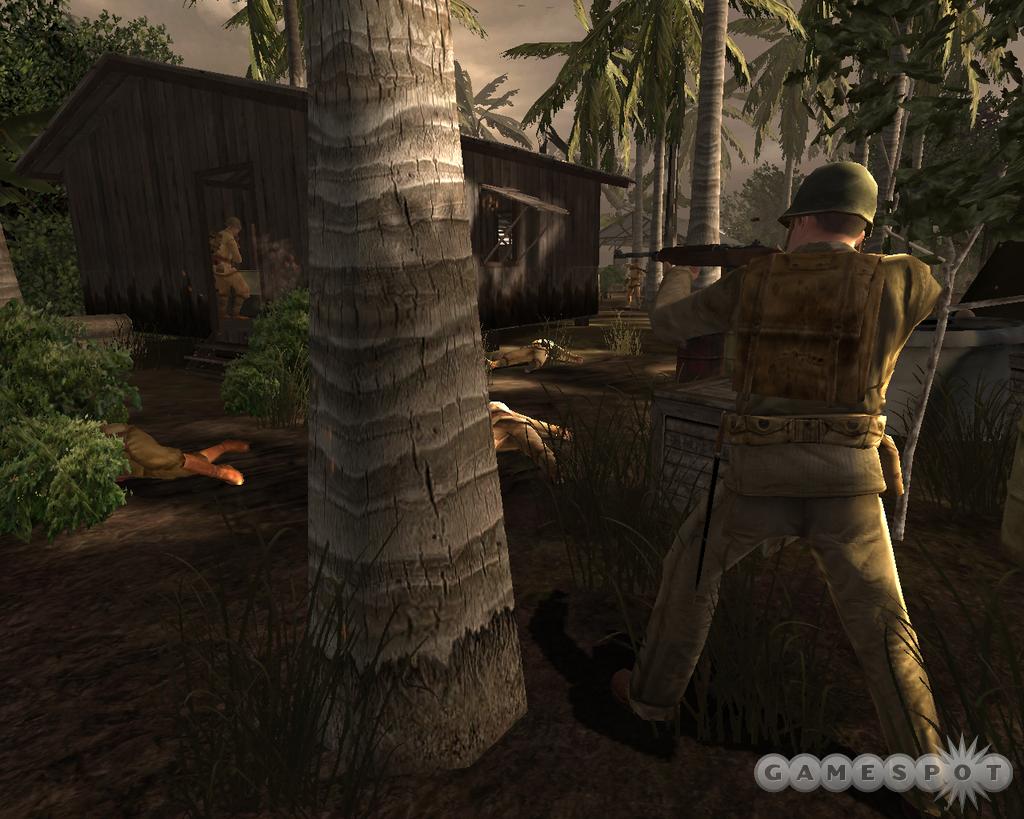
While Americans found their fighting strength in the support of their loved ones back home and the squadmate in the foxhole they were sharing, the Japanese were driven by the infallible code of Bushido (literally translated it means, "Way of the Warrior"); they were literally programmed to fight. Inspired by their emperor and emboldened by honor for their families and country, they would stop at nothing and do anything to gain honor. It is only cultures borne of fanaticism that can produce such things as the kamikaze (divine wind), suicide attacks, and a code of conduct that makes it more shameful to surrender than die. In Medal of Honor Pacific Assault, we plan on depicting the incredibly intense, relentless, and vicious battles as these two cultures clash in what many believe was the most horrible fighting the world has ever seen.
In order to create detailed nuances in the game, we had to outline the technical needs, gameplay features, and story elements up front. We started by creating a list of what engineering features would be required to take Medal of Honor Pacific Assault to the next level--to re-create the genre--much like we did with Allied Assault. We rolled up our sleeves and defined the overall vision of the game. Our plan: To create the most viscerally exciting, intense, and relentless squad-based World War II first-person shooter that the world has ever seen. I wanted to create a game that put you on the battlefield with a group of guys and made you feel as if you were really there. We started from scratch. Out went the old Quake III engine; in came a completely new list of features never before attempted. I'll quickly introduce them now, but we'll go into more detail later in future diaries.
"Dynamic Procedural Squad Artificial Intelligence": The ability for the player-friendly and non-player-friendly non-player characters to react in real time to changes in tactics, pressure from enemy squads, and morale. Out goes the scripted AI; this is a game that never plays the same way twice. To me, that is gameplay nirvana. A game that plays more like a multiplayer game, where the enemy is thinking and changing tactics based on the ever-changing tide of the battle.
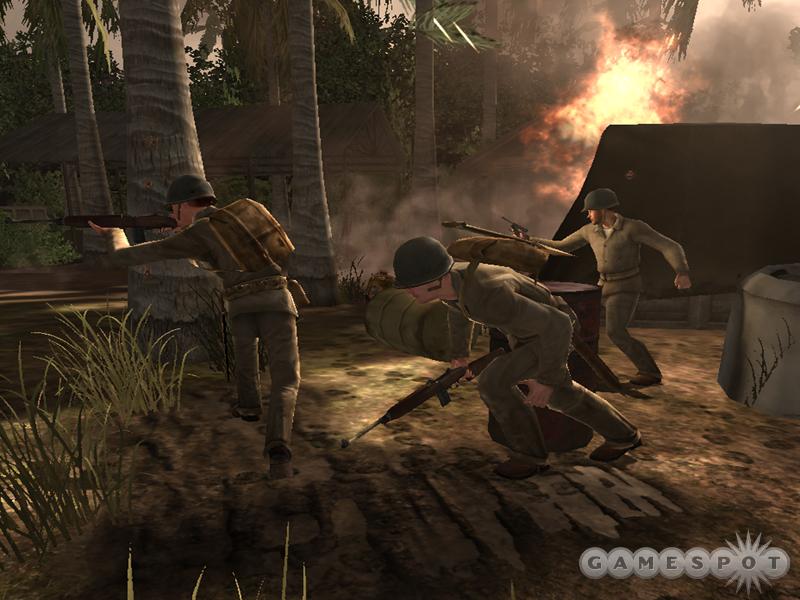
"Adaptive Dynamic AI Dialogue": The player's squadmates as well as the enemies actually speak, yell, and call out to you and their squadmates in real time. This helps you know exactly what is going on as you play, so it will be very helpful for players to pay close attention to what the Japanese are saying and recognize some of their tactical call outs.
We've created an entirely new DirectX 9 render engine, built specifically for our style of gameplay: The highest fidelity in environments, characters, weapons, and effects that modern PCs and 3D hardware could muster. We created a new character rig and bone-based facial animation system to support the highest film quality animation, with full facial expressions and lip sync that add new levels of character fidelity.
Verge of Death
We added Havok-based real-time physics for destructible environments and increased world interaction and persistence. The world changes as you play, and both your squad and the enemy recognize it. Need cover? Blow up a structure, but just make sure you get there before the enemy does, because he will use it to his advantage. 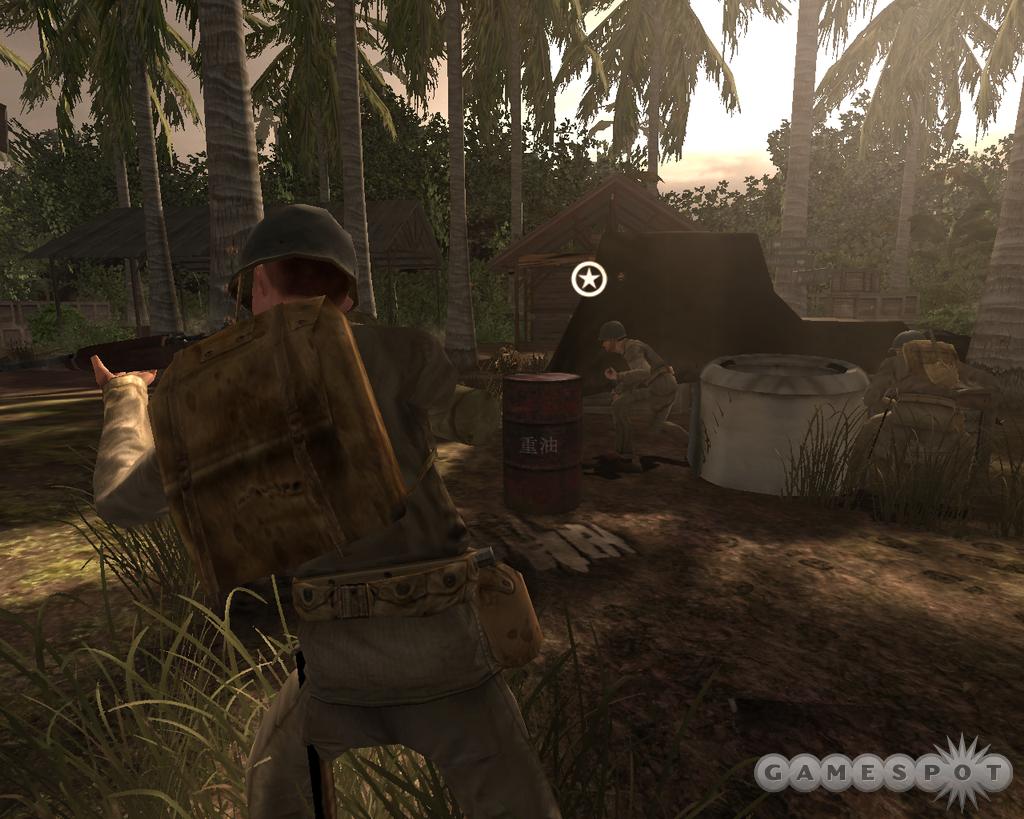
We created an all-new lighting pipeline along with complete 3D shader support, working hand-in-hand with both Nvidia and ATI. We also worked with Intel inhouse to bleed the highest levels of performance out of its newest chipsets.
In an effort to drive authenticity to the max, we have to rid ourselves of the arcade elements found in almost every first-person shooter. No more convenient med packs and canteens lying around the battlefield. No more ammo packs strewn about--just medics (corpsman, in this case) are present with every squad. The player gets to use what ammo he and the squad went in with and could carry. Stripping fallen comrades of their weapons and ammo was common practice in the Pacific. In Medal of Honor Pacific Assault, if you get shot you have a couple of choices: Stagger about until you bleed out, self-bandage to temporarily stop the bleeding, or crawl to cover and call for some help. Hopefully the corpsman will be close enough to come to your aid. You'll also need to cover him while he's attending to you. (Unlike in Europe, the Japanese gave no quarter to medics or corpsman. In fact, they would target them, knowing that morale would suffer if nobody was able to help the wounded on the battlefield. This is why you see no insignia on medics and corpsman in the Pacific.)
We're also introducing a new feature we fondly call "Verge of Death." In Pacific Assault, when you get shot the wound will affect you physically; you'll start to slow down, your breathing will change, you'll hear your heart slow down, your senses will diminish, the world will get progressively blurrier as you bleed out, your hearing will become muffled, and the battle will progress as if everything is happening in slow motion. You'll fall to the ground and watch the action around you as if you're in a dream. This is what the vets tell us actually happened to them when they were wounded during battle. We're re-creating it for you, and just as in battle, you can be revived.
To further enhance the game and game development, we've also separated the single-player and multiplayer teams, so multiplayer is no longer an afterthought. We are also focusing on cultivating the strong Medal of Honor fan base with full community support through our EAGames Nation site, and full mod support with the release of a suite of tools and a software development kit at launch.
Fighting in the Pacific was less about being a hero than it was about acting as a team. This is the single difference that separates Pacific Assault from Allied Assault and all of its competitors. You have to work together. Sure you can still run 'n' gun, but it will be no picnic and chances are even the best players in the world will eat it. Stay with your squad, use their cover fire, try different tactics, keep them alive--you'll need them to survive.
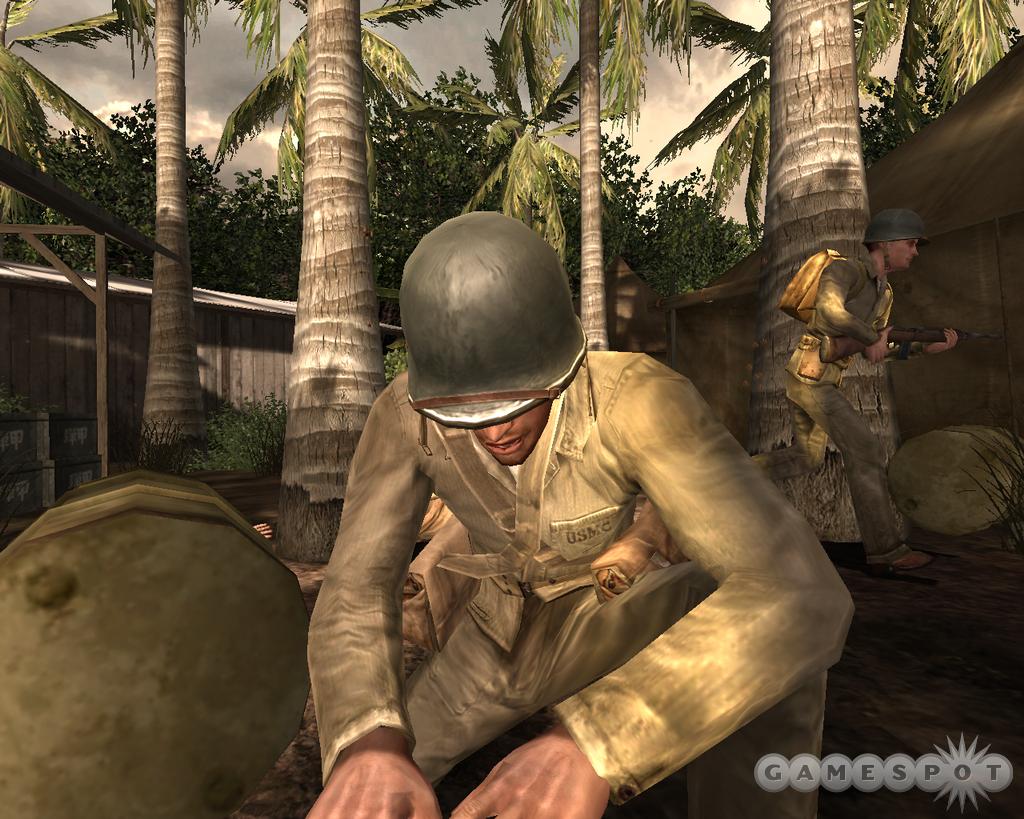
We are currently in full production on our game levels and the game is on track to release this fall. Pretty soon, fans won't have to read about all the cool new features and enhancements we have added, they'll be able to play the game and see what a relentless, visceral, and authentic World War II squad-based experience it is. We are proud to have invented the World War II genre, and we are certain Medal of Honor Pacific Assault will push the genre to the next level. But hey, don't listen to me; play it for yourself and then you can decide. I already know.
Till next time!
Got a news tip or want to contact us directly? Email news@gamespot.com
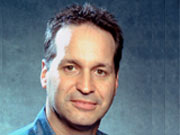
Join the conversation